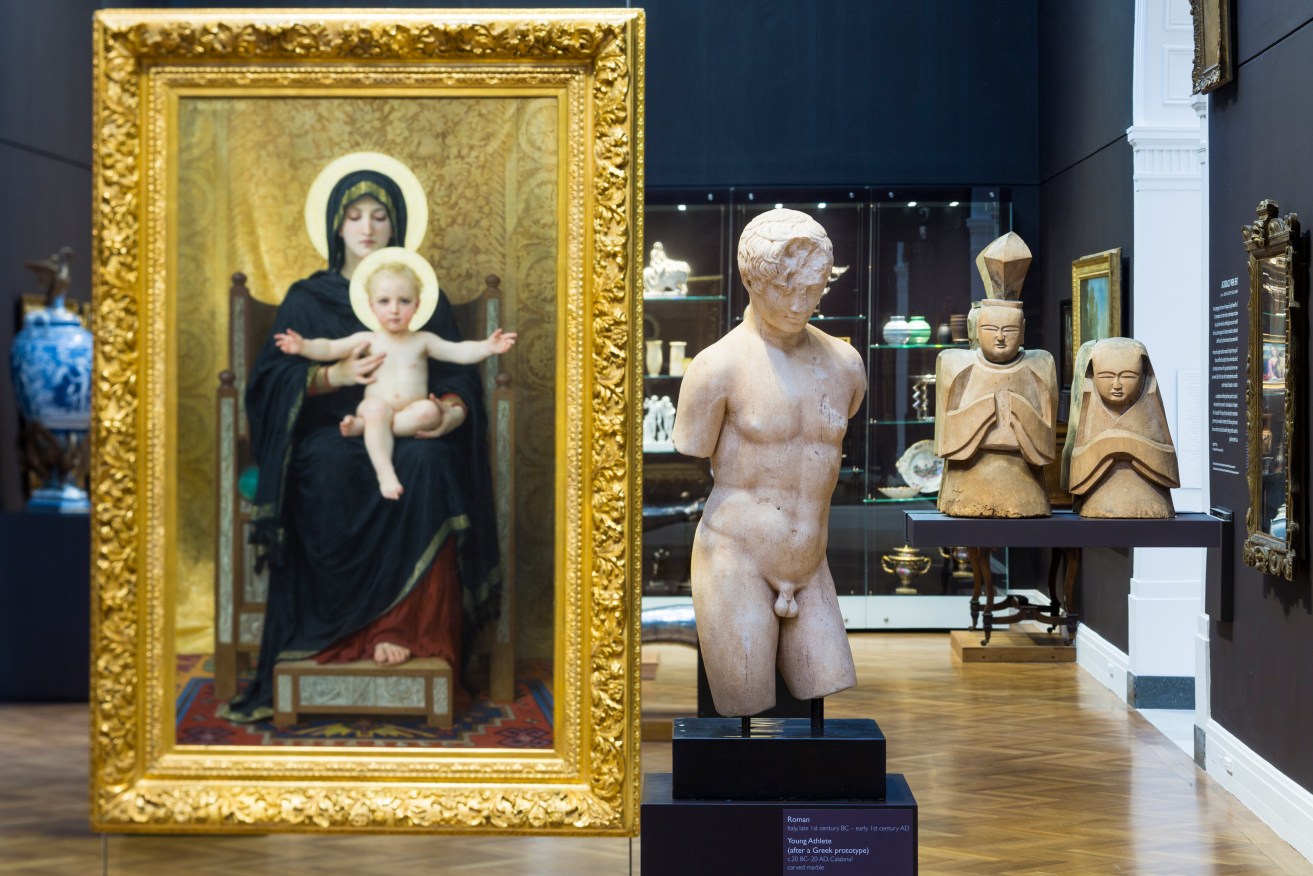The power of collecting
Nick Mitzevich ponders the urge to collect and considers why it’s so important in a city like Adelaide.

The eclectic works on display in the Art Gallery's Melrose Wing. Supplied: Art Gallery of SA
It is often argued that collecting is a decidedly, even exclusively, human urge. But the habits of the male bowerbird suggest otherwise. The bowerbird collects to impress – to lure a potential partner with colour and form. Some bowerbirds are so skilled in the art of aesthetic seduction that their bowers rival the best contemporary art installations.
These avian acts of selecting and arranging speak to an urge so elemental that the art of collecting emerges as less of a pastime and more of a primal necessity. Just as the bowerbird arranges his collection to ensure the future of his species, we too collect for survival – to ensure our legacy and to show ourselves to future generations. There are other reasons, too, of course: we collect to show our loyalty, to recount an experience, to covet the rare and the curious etc. But ultimately we collect to show we are here, alive, in the world.
Collections are at once about the past, present and the future. Forged in a previous experience they embody the past, are experienced in the present, all the while propelling themselves, as cultural time capsules, into new prospective future worlds. This is precisely why we find the desecration of collections and cultural material so reprehensible – such acts amount to an erasure of history and an obliteration of the future. Similarly, the selling of collections is a sure fire way to short change a community and limit its future.
This reimagining of what collections can do when liberated from storage has only just begun and Adelaide can lead the way.
Art collections play a key role in defining and communicating who we are in the world but when hidden from view, their capacity for communication is at best limited. The best collections in the world are those with well-trodden pathways to their door. The best collections are those with contemporary currency.
Take the world’s best-known museum, the Musée du Louvre and its new annexe, Louvre-Lens. This new museum, mentioned in my first piece written for InDaily in February this year, signals the realisation that a collection means nothing if left dormant in the basement. Accessible and activated, a collection can lead economic and cultural renewal and give an entire community purpose. Next year the Louvre will begin to relocate the remainder of its Paris-based collection, some 220,000 works, north to Lens in the Calais region where it will continue to create jobs and forge a creative future for a region that has faced economic and social challenges.
Lens is one of several international examples of political and economic support for collection activation. There is yet to be a compelling Australian case study in collection activation.
With a collection of approximately 42,000 works of art and a situation whereby, due to limited display opportunities, only 2% is visible at any given time, the Art Gallery of South Australia’s collection is ripe for rethinking. Imagine the potential for education, broad community engagement and year-round entertainment if the collection, currently inactive in storage, was made visible, accessible and useful. Adelaide would be home to a new twenty-first century cultural destination where the narratives of Australian cultures – including Aboriginal, European and Asian cultures – could be experienced and shared. Thousands of works of art, previously unseen or in rare circulation, could be exhibited and accessible to the broadest audience. Imagine a collection representing the history of civilisation at your fingertips.
This reimagining of what collections can do when liberated from storage has only just begun and Adelaide can lead the way. As a small and extremely livable city, with a reputation for brave artistic statements, Adelaide’s dream of art and culture-led renewal can be a reality. Furthermore, Adelaide’s strong tradition of cultural philanthropy creates an ideal environment for such innovation and for the forming of private and public partnerships.
Like the tale of the bowerbird, collecting for South Australia may well not only be fundamental to survival, but essential for success.
Nick Mitzevich is Director of the Art Gallery of South Australia. Read his other columns for InDaily here.




